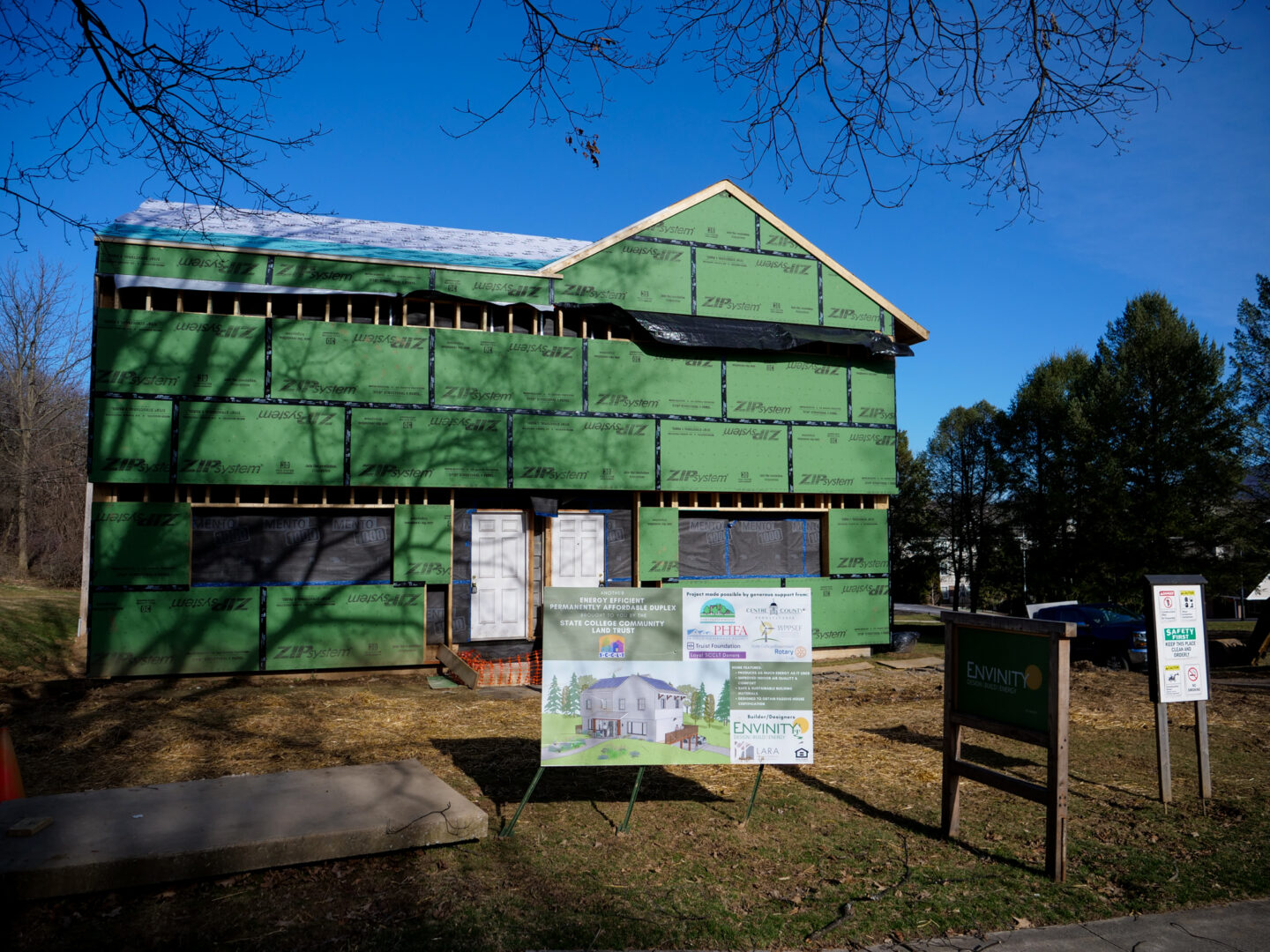
The State College Community Land Trust and Envinity are working to make a home in State College more energy efficient. They built an "envelope" around the exterior of the home that will be filled with insulation. (Jeremy Long - WITF)


The State College Community Land Trust and Envinity are working to make a home in State College more energy efficient. They built an "envelope" around the exterior of the home that will be filled with insulation. (Jeremy Long - WITF)

The State College Community Land Trust and Envinity are working to make a home in State College more energy efficient. They built an "envelope" around the exterior of the home that will be filled with insulation. (Jeremy Long - WITF)
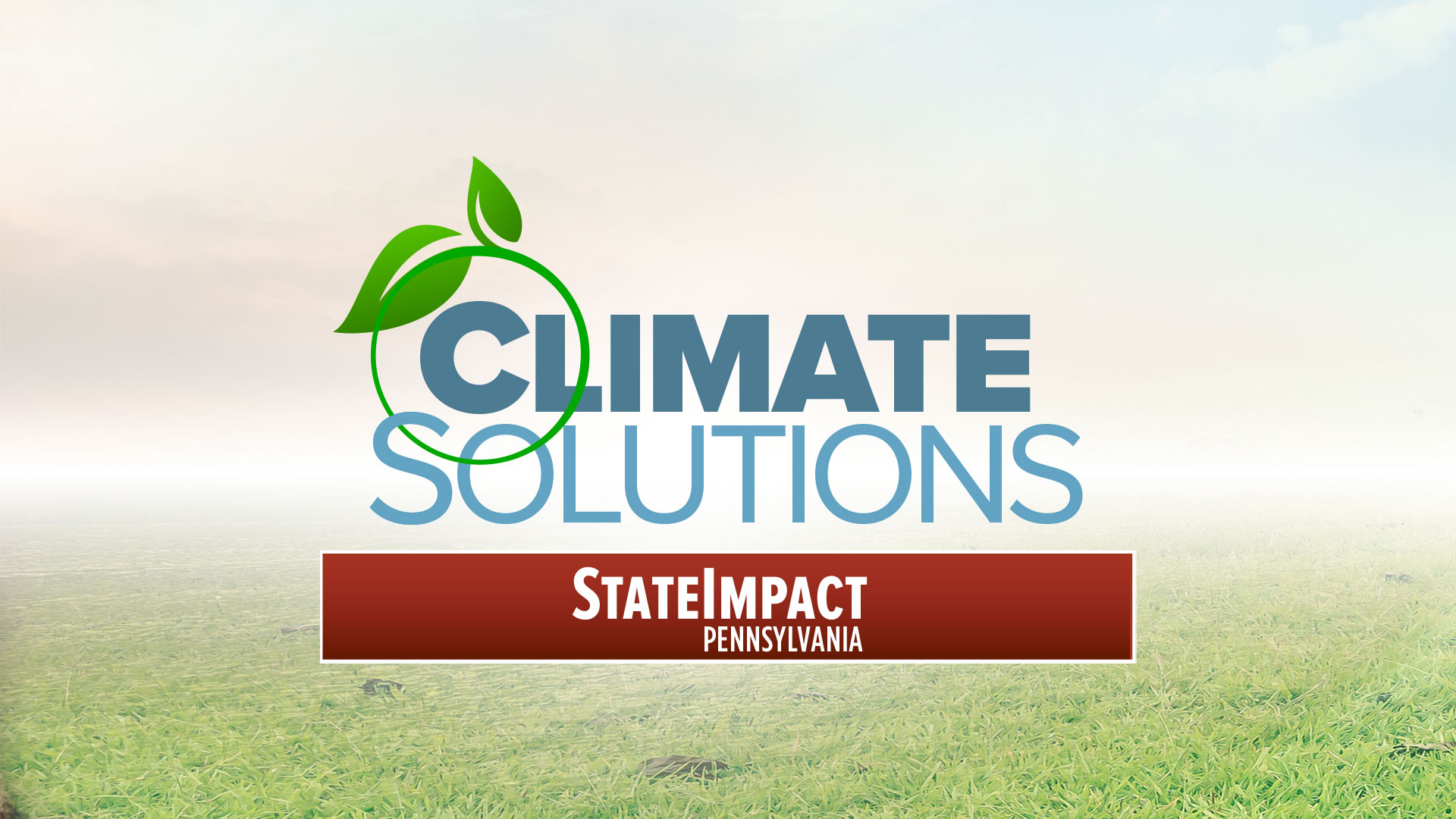 This story was produced for Climate Solutions, a collaboration focused on helping Central Pennsylvania move toward climate literacy, resilience and adaptation. StateImpact Pennsylvania convened the collaboration, and WITF is a partner. Climate Solutions’ funding partner is the Solutions Journalism Network.
This story was produced for Climate Solutions, a collaboration focused on helping Central Pennsylvania move toward climate literacy, resilience and adaptation. StateImpact Pennsylvania convened the collaboration, and WITF is a partner. Climate Solutions’ funding partner is the Solutions Journalism Network.
Listen to the story:
Eddie and Kristy Riley knew they wanted to start and raise their family in State College, but for a long time, owning a home in the borough seemed out of reach.
Both are Penn State graduates. Eddie works in mental health care; Kristy is a teacher who now stays at home to care for their two sons. But a mortgage in the area was too much. The median home value in State College is around $370,000.
“There were several times when we’d look at each other and have the conversation like, what, what did we do wrong?” Eddie Riley said.
The Rileys could afford rent, but sometimes their heating bills were $500 for one month. Eddie and Kristy remember heating only one room for the whole family and blocking off other parts of the house with blankets. A rent hike on top of the high energy bills forced them out of the borough a few years ago.
They ended up finding the State College Community Land Trust, which has a program designed not only to help people afford a home, but to renovate the home to be as energy-efficient as possible. That efficiency piece saves the homeowners money and also cuts down on emissions from home heating, one of the top contributors to the greenhouse gases that fuel climate change. The efforts can be of particular help in Pennsylvania, which has some of the oldest housing stock in the nation.
The land trust’s mission is to promote affordable homeownership in the borough. A recent pilot program added an energy efficiency component to 12 homes that were built in around the 1950s and 60s.
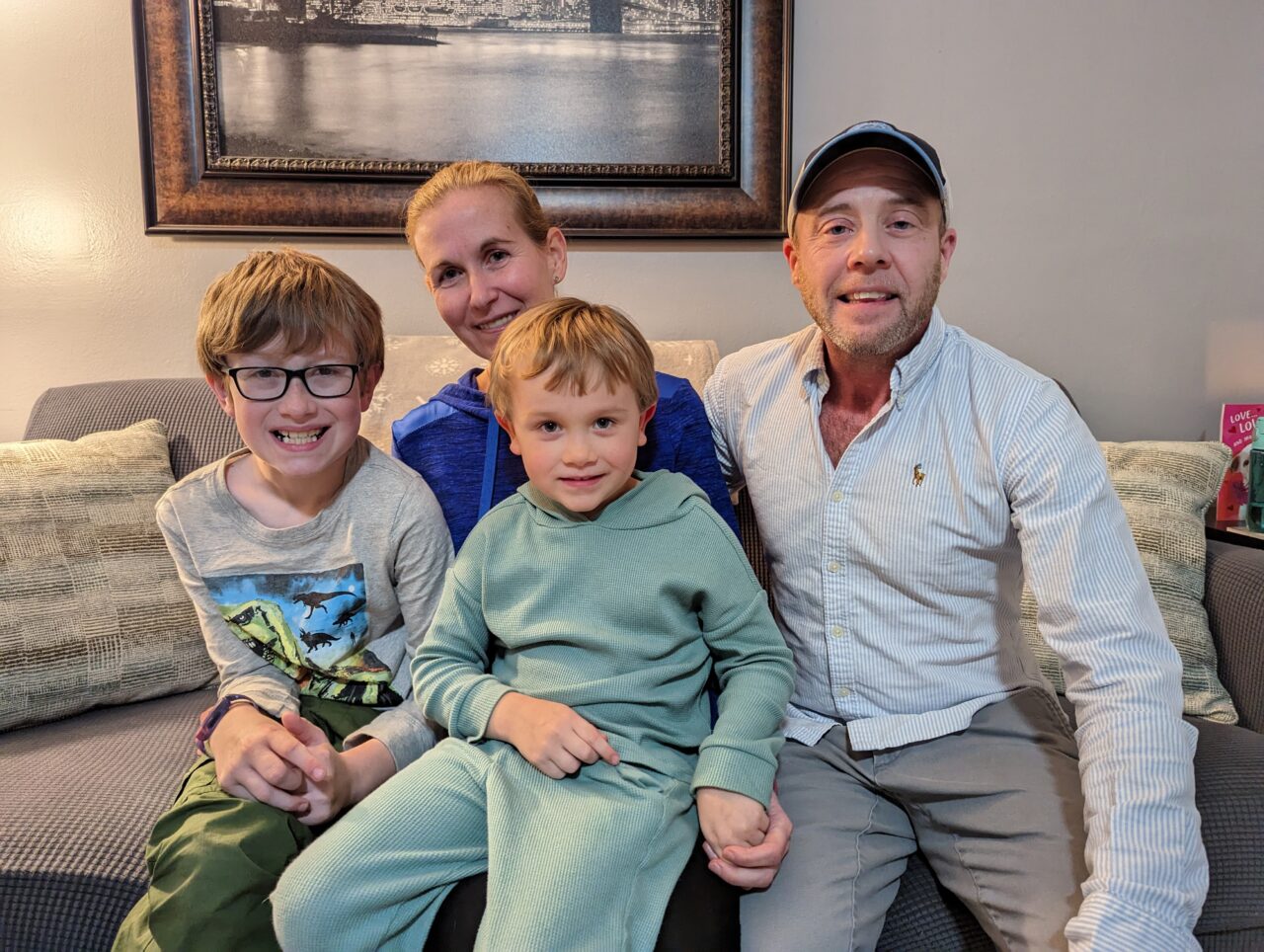
Rachel McDevitt / StateImpact Pennsylvania
Kristy and Eddie Riley pose for a photo with their sons Ludden and Aiden on Feb. 16, 2023.
The Rileys became part of the pilot when they moved into the white cottage on Old Boalsburg Road. The land trust had done an energy audit in the house, added insulation to the attic and basement, installed an electric, heat pump-powered water heater and put new, efficient appliances in the kitchen. Those improvements reduced the home’s energy needs by a quarter.
Now the Rileys have been homeowners for over a year and they don’t have to worry about whether they will be able to pay all their bills. The family was even able to visit relatives in Florida this spring.
“It’s been a blessing, a gift. I feel like we won the lottery,” Eddie Riley said.
Others may also have the chance to win out soon, because of new federal money and state programs that aim to help people save on their energy bills while reducing planet-warming emissions.
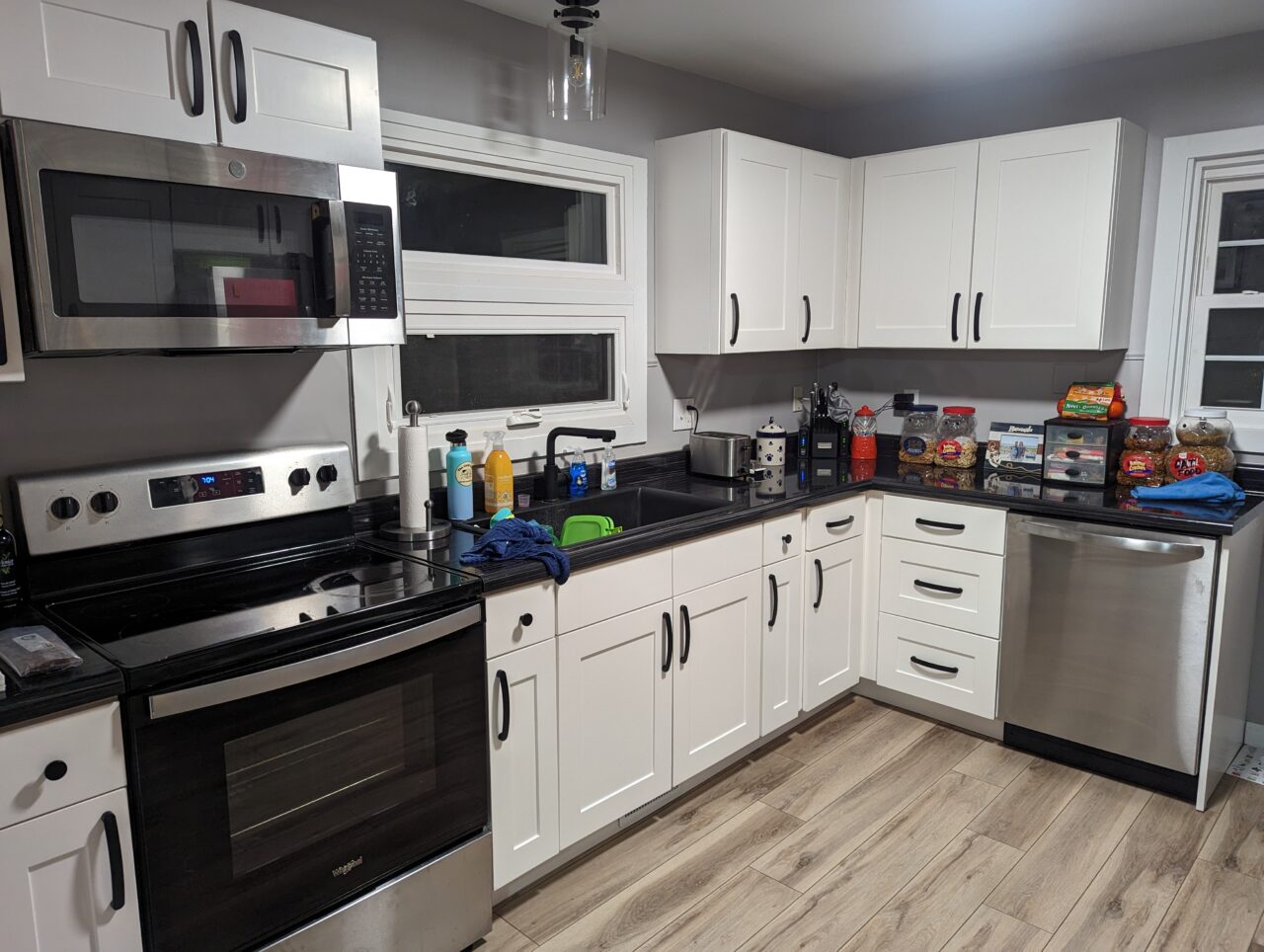
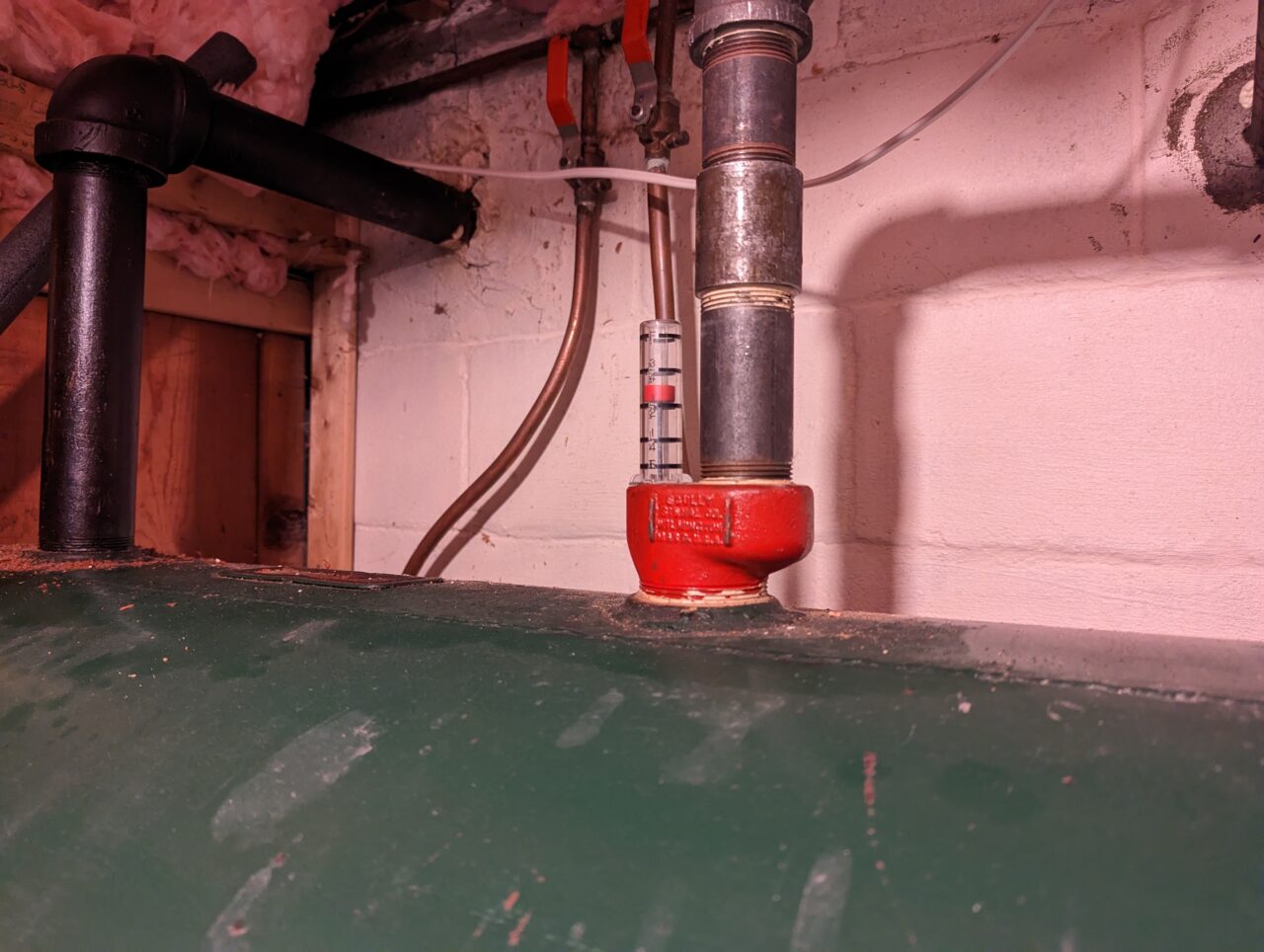
Emissions from home heating account for about 7% of greenhouse gas emissions in Pennsylvania.
Data from the Energy Information Administration shows that, nationally, home energy use accounts for about 20% of emissions when accounting for indirect emissions from electricity use.
Energy efficiency measures are some of the most effective ways to reduce carbon pollution. The International Energy Agency, which works with countries around the world on energy policy, estimates that efficiency could reduce the building sector’s emissions by around 25%.
An energy efficient home helps people save money on utility bills. It also plays a role in lowering climate-warming emissions. About 20% of the country’s emissions are because of energy and electricity use in homes.
Graphic: Tom Downing, WITF | Sources: U.S. Department of Energy and Project Drawdown
Colleen Ritter, executive director of the State College Community Land Trust, plans to keep a focus on energy efficiency in all the homes the nonprofit buys.
“We recognize that it really needs to be at the forefront,” Ritter said. “Because if people are buying the houses and the mortgages are affordable to them… we want to make sure that the house is then affordable to them as well.”
Work is underway at the land trust’s latest project, a 1970s duplex on University Avenue. In March the home looked like it was made from big green legos. A grid of insulation boards was built around the house like a shell, making 9.5 inches of space from the original walls for new insulation.
When finished, this home will be known as a passive house, which is one of the highest standards in home energy efficiency. All the appliances will be electric, including a heat pump instead of a gas furnace. It’s airtight, keeping warm or cool air inside the home.
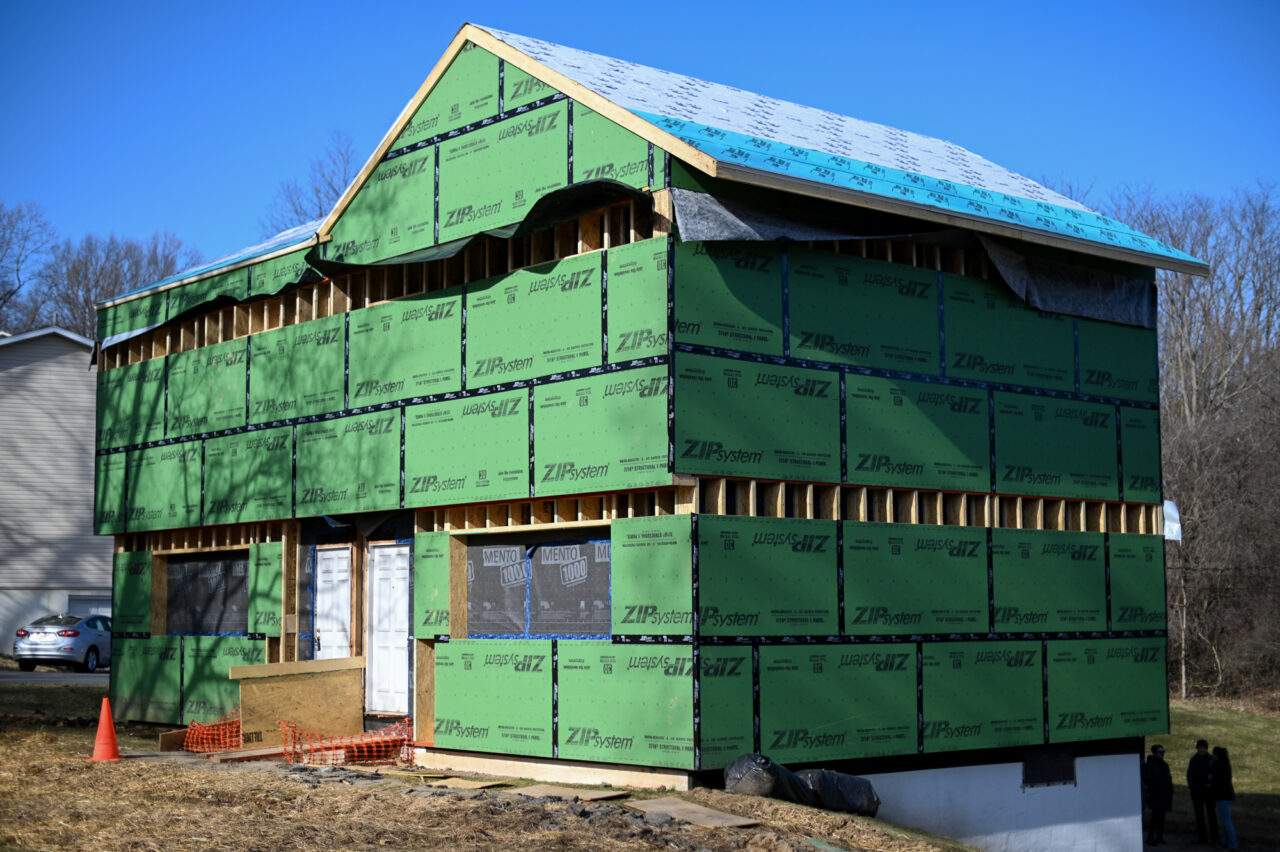
The State College Community Land Trust and Envinity are working to retrofit this home in State College into a highly energy efficient “passive house.” They built an “envelope” around the exterior of the home that will be filled with insulation. (Jeremy Long – WITF)
“This house is going to be pretty much constant temperature,” said Karis Taddei, project manager with Envinity, which is doing the renovations. “So that alone will save tons on energy costs and it’ll be like thermal comfort in your house.”
The focus for the land trust is affordability. It’s listing each home of the duplex for $105,000. But there’s also attention on using materials that are friendlier to the environment and on the overall carbon footprint of the home.
Ritter hopes the passive house can be something of a model for other nonprofits or governments that want to make homes safe, comfortable and efficient.
“We’re not gonna build our way out of a housing shortage. But what we do need to do is to make things sustainable and affordable and energy efficient,” Ritter said.
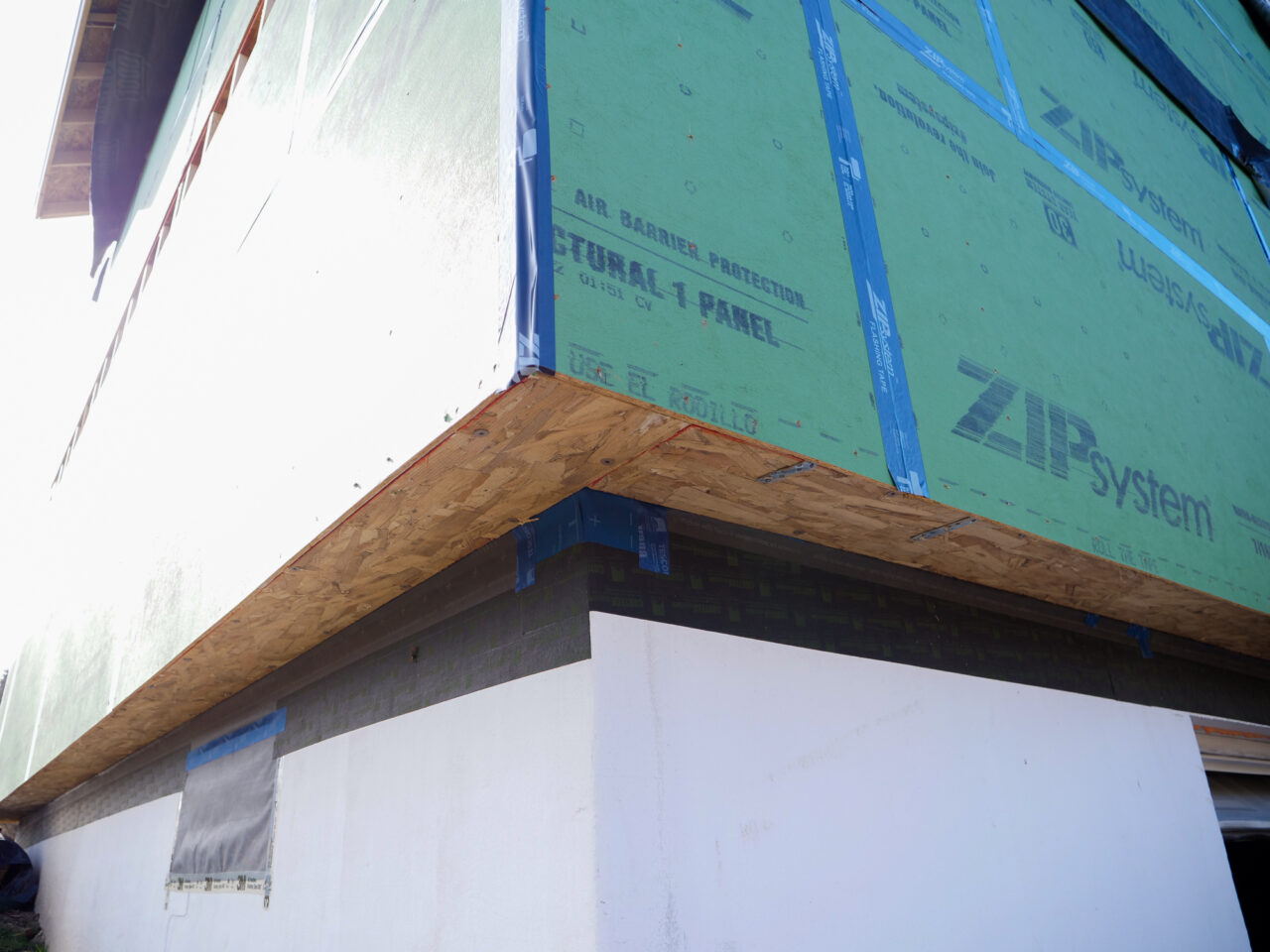
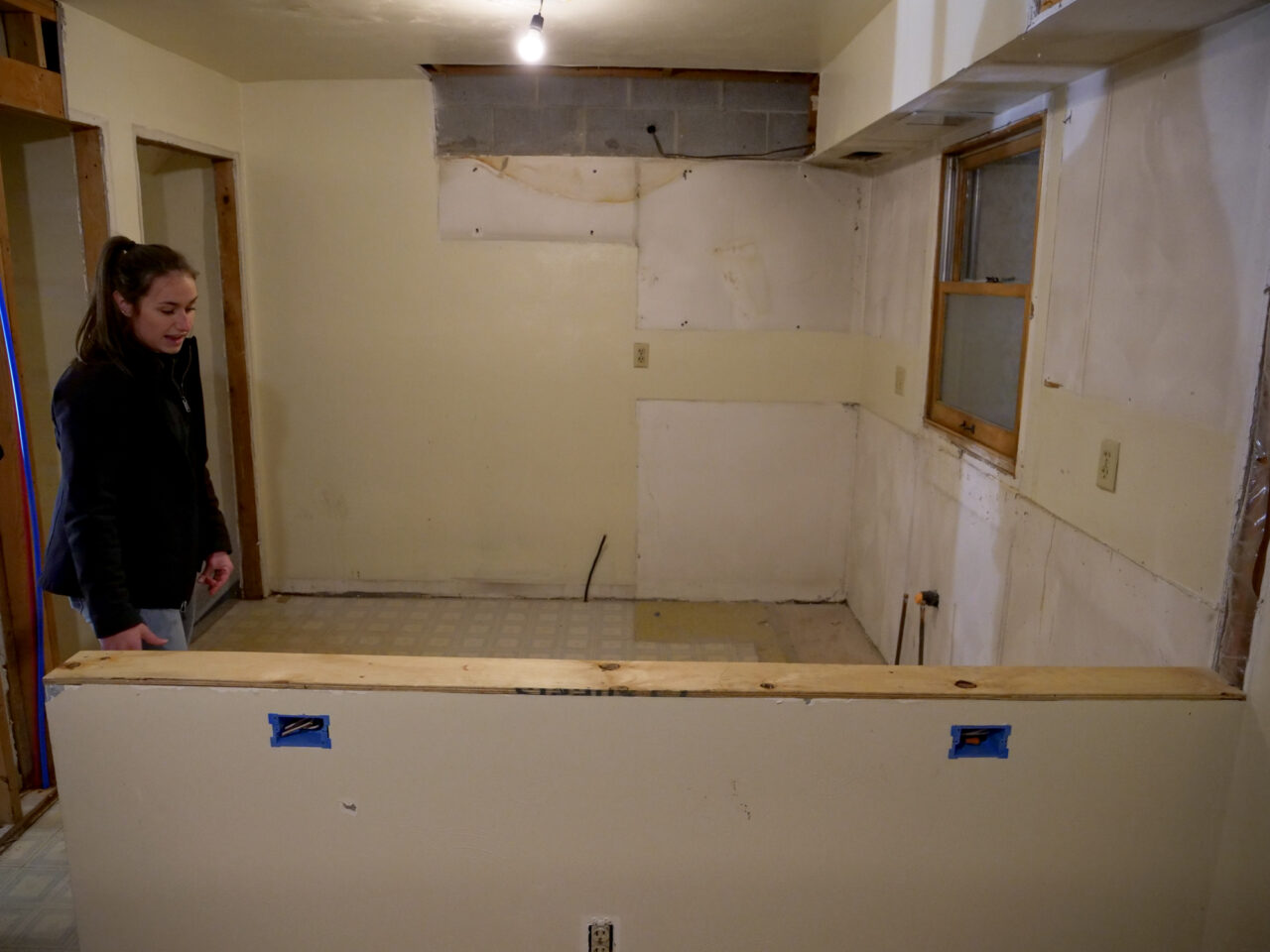
Communities have an opportunity now to look at issues in housing and prioritize efficiency.
The recent federal infrastructure law expanded weatherization programs and the Inflation Reduction Act is giving $9 billion to home efficiency programs, with the goal of lowering energy bills and emissions at the same time.
A new state program called Whole Home Repairs allocated $125 million to counties last year to improve homes owned by people with low incomes, who often pay up to a third of their income on utility bills, leaving them unable to make the upgrades that would ultimately save them money and prevent emissions.
Pennsylvania, with its old housing stock, needs the help. Surveys have found that one in four voters lives in a home that needs a critical repair. Homes in need of repair are ineligible for other weatherization assistance. Advocates are pushing now to make Whole Home Repairs a permanent part of the state budget.
Pam Adams with the Centre Region Council of Governments has been working on proposals to expand the land trust’s Energy Plus pilot program in the State College area. She’s hopeful the new federal and state programs will achieve multiple goals.
“There is not just climate programs, they have co-benefits and this can help people afford their homes more,” Adams said. But there will be challenges.
Adams said people often don’t want government involved in their homes, and they may be too busy to realize what the programs do and if they qualify.
Then there’s finding people to do the work. Contractors already have more work than they can get to, so going through extra training to understand and work with government programs could discourage some from participating.
Some of the new state money is meant for workforce development.
Adams said outreach and training will be crucial to make the most of the new programs.
StateImpact Pennsylvania is a collaboration among WITF, WHYY, and the Allegheny Front. Reporters Reid Frazier, Rachel McDevitt and Susan Phillips cover the commonwealth’s energy economy. Read their reports on this site, and hear them on public radio stations across Pennsylvania.
(listed by story count)
StateImpact Pennsylvania is a collaboration among WITF, WHYY, and the Allegheny Front. Reporters Reid Frazier, Rachel McDevitt and Susan Phillips cover the commonwealth’s energy economy. Read their reports on this site, and hear them on public radio stations across Pennsylvania.
Climate Solutions, a collaboration of news organizations, educational institutions and a theater company, uses engagement, education and storytelling to help central Pennsylvanians toward climate change literacy, resilience and adaptation. Our work will amplify how people are finding solutions to the challenges presented by a warming world.